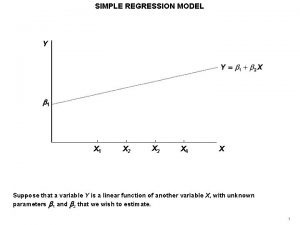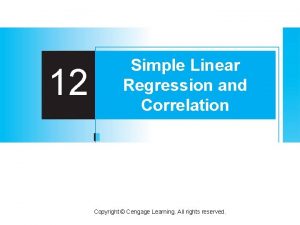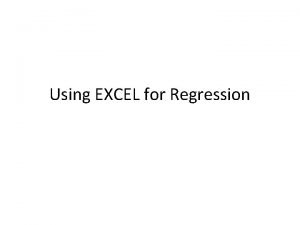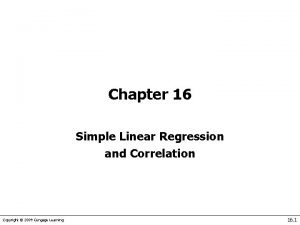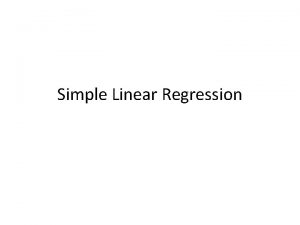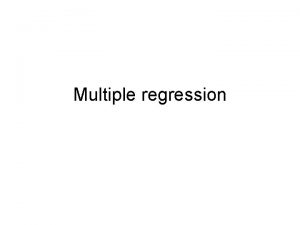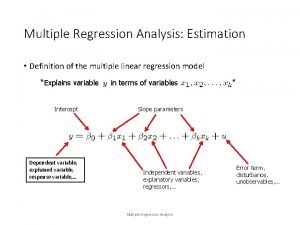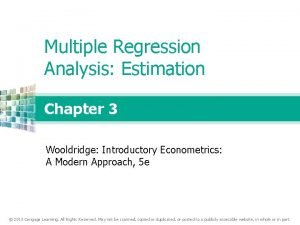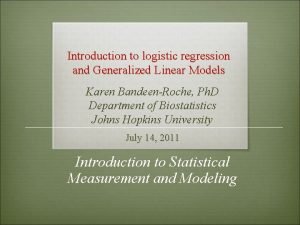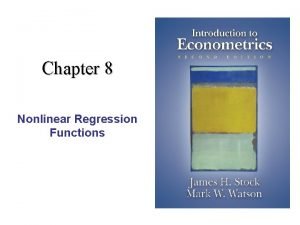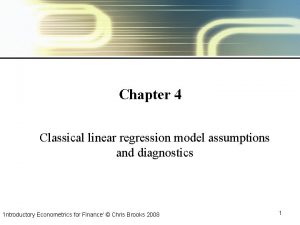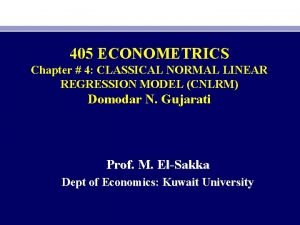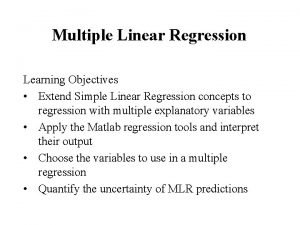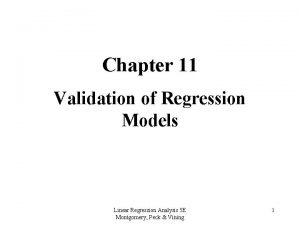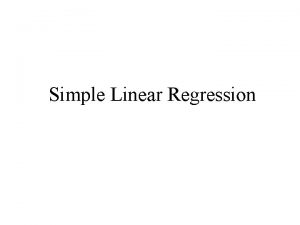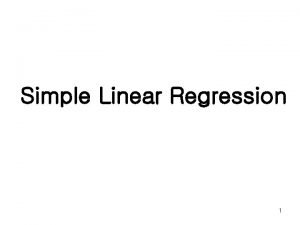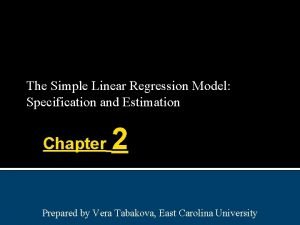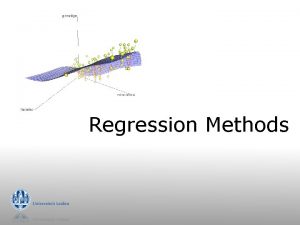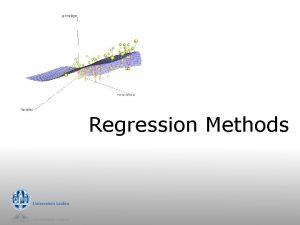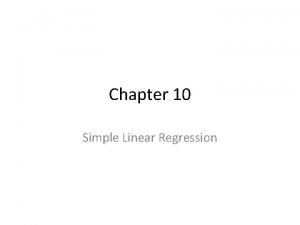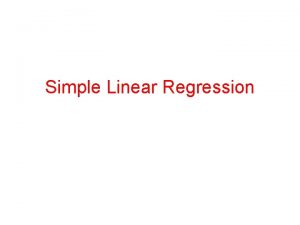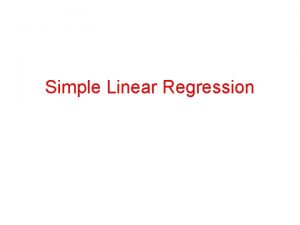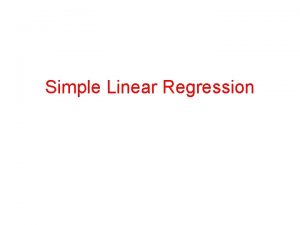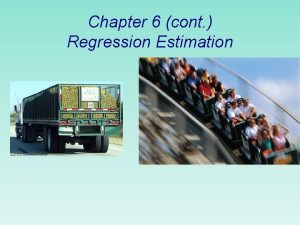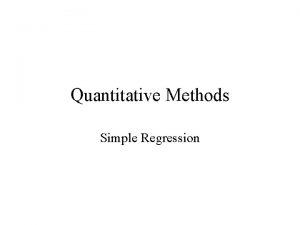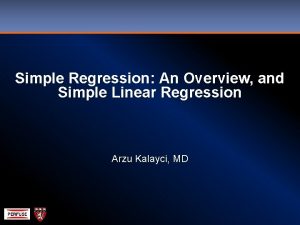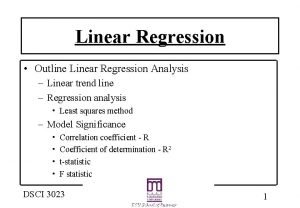The Simple Linear Regression Model Specification and Estimation



















- Slides: 19

The Simple Linear Regression Model Specification and Estimation Hill et al Chs 3 and 4

Expenditure by households of a given income on food

Economic Model • Assume that the relationship between income and food expenditure is linear: • But, expenditure is random: • Known as the regression function.

Econometric model

Econometric model • Combines the economic model with assumptions about the random nature of the data. • Dispersion. • Independence of yi and y j. • xi is non-random.

Writing the model with an error term • An observation can be decomposed into a systematic part: – the mean; • and a random part:

Properties of the error term

Assumptions of the simple linear regression model

The error term • Unobservable (we never know E(y)) • Captures the effects of factors other than income on food expenditure: – Unobservered factors. – Approximation error as a consequence of the linear function. – Random behaviour.

Fitting a line

The least squares principle • Fitted regression and predicted values: • Estimated residuals: • Sum of squared residuals:

The least squares estimators

Least Squares Estimates • When data are used with the estimators, we obtain estimates. • Estimates are a function of the yt which are random. • Estimates are also random, a different sample with give different estimates. • Two questions: – What are the means, variances and distributions of the estimates. – How does the least squares rule compare with other rules.

Expected value of b 2 Estimator for b 2 can be written: Taking expectations:

Variances and covariances

Comparing the least squares estimators with other estimators Gauss-Markov Theorem: Under the assumptions SR 1 -SR 5 of the linear regression model the estimators b 1 and b 2 have the smallest variance of all linear and unbiased estimators of 1 and 2. They are the Best Linear Unbiased Estimators (BLUE) of 1 and 2

The probability distribution of least squares estimators • Random errors are normally distributed: – estimators are a linear function of the errors, hence they a normal too. • Random errors not normal but sample is large: – asymptotic theory shows the estimates are approximately normal.

Estimating the variance of the error term

Estimating the variances and covariances of the LS estimators
 Simple and multiple linear regression
Simple and multiple linear regression Logistic regression vs linear regression
Logistic regression vs linear regression Logistic regression vs linear regression
Logistic regression vs linear regression Regression linear model
Regression linear model Least square method
Least square method Upper specification limit and lower specification limit
Upper specification limit and lower specification limit Natural variations operations management
Natural variations operations management Null hypothesis for linear regression
Null hypothesis for linear regression Simple linear regression excel
Simple linear regression excel Simple linear regression
Simple linear regression Simple linear regression
Simple linear regression Linear regression assumptions spss
Linear regression assumptions spss Define multiple regression
Define multiple regression R-squared interpretation example
R-squared interpretation example Log linear regression model
Log linear regression model Log linear regression model
Log linear regression model Assumption of classical linear regression model
Assumption of classical linear regression model Classical normal linear regression model
Classical normal linear regression model Kr
Kr Linear regression model validation techniques
Linear regression model validation techniques




